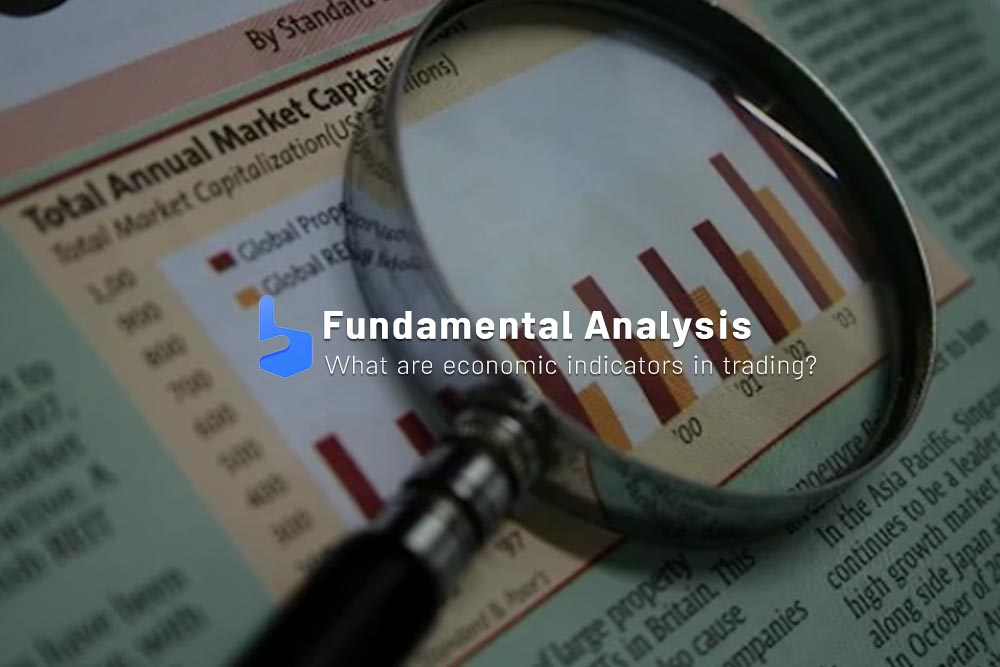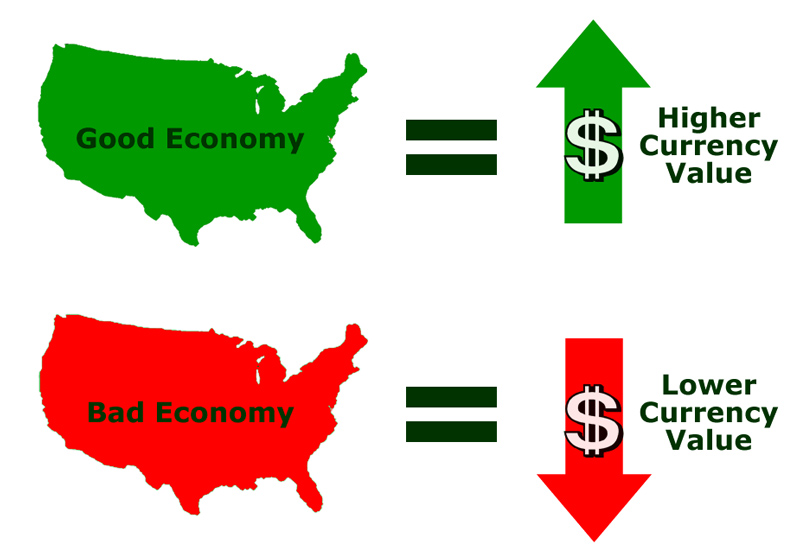What you are about to read:
Fundamental analysis in Forex focuses on the overall state of the economy, examining various factors such as interest rates, employment rates, gross domestic product (GDP), international trade, and production. This research, conducted by Brokerland in this article, delves into the relative impact of these factors on the national currency value. Join us to learn forex as we thoroughly explore this crucial and foundational topic in the Forex market.
What Is Fundamental Analysis in Forex?
All traders are not interested in trading in Forex using expert advisor and technical ways like price action and strategies like equilibrium trading in Ichimoku and MACD and stochastic. This category prefers fundamental analysis, which is a method for evaluating financial instruments such as currencies in the currency market (Forex) by examining economic, financial, and geopolitical factors that affect their value. In the Forex market, this analysis can be used to determine long-term trends and likely future movements of currency pairs.
Fundamental analysis is a method used to evaluate financial instruments, such as currencies in the Forex market, by examining economic, financial, and geopolitical factors that influence their value. In the Forex market, this analysis method can be utilized to determine long-term trends and potential future movements of currency pairs.
Another critical factor in fundamental analysis in Forex is geopolitical events and forex news. Events like wars, political instability, and natural disasters can significantly impact the value of a currency. For instance, a country experiencing political turmoil or civil unrest may see a decrease in the value of its currency due to investors leaving the market, seeking lower risk and uncertainty.
The fundamental analysis assumption, not only in Forex but also in other financial markets, is that the price of an asset may differ from its true value. Therefore, different markets may sometimes misprice an asset in the short term. Fundamental analysts claim that despite short-term mispricing, assets always return to their true value eventually. The ultimate goal of fundamental analysis is to uncover the real value of an asset, compare it to the current price, and identify trading opportunities.
This highlights the key difference between fundamental and technical analysis. While Forex technical analysis focuses almost exclusively on the current price, fundamental analysis investigates everything except the current price. While fundamental analysis may not be the best tool for short-term traders in daily markets, it is the factors and their analysis that respond to what happens in the long term. Even traders following a price action RTM style, which relies on reading the market and predicting trends without relying on indicators and technical elements, can be considered a form of fundamental analysis.
Method and Principles of Fundamental Analysis
Fundamental analysis in Forex goes beyond comparing current data with past economic indicators such as the US Dollar Index. Numerous economic theories surround and attempt to frame the analysis of Forex, aiming to place various economic data within a framework for comparison.
To conduct fundamental analysis in Forex, traders need to consider various macroeconomic indicators, including economic growth rates, inflation rates, interest rates, employment figures, trade balances, and government policies. These factors can provide insight into the strength or weakness of an economy and its currency. For instance, a country with high gross domestic product (GDP) growth and low inflation may be perceived as economically stable and attractive to investors, potentially leading to an increase in the value of its currency.
Traders can use fundamental analysis in Forex to identify trading opportunities and make informed decisions about when to buy or sell currency. For example, if a trader believes that a country’s economy is strong and likely to continue growing, they might purchase that country’s currency in anticipation of benefiting from its increasing value.
However, it’s crucial to note that fundamental analysis is not a risk-free method for predicting future currency pair movements. The Forex market is highly complex, and various factors, including market sentiment (mentioned in sentiment analysis) and technical analysis, can influence currency prices.
Moreover, fundamental analysis is a long-term approach, and traders using it must be patient and willing to wait for their trades to unfold over several months or even years. Short-term traders seeking profits from small price movements may find that technical analysis is a more effective method for predicting short-term price actions.
Forex News
From a practical standpoint, ordinary Forex traders often find that news reports create movements in the markets. Several economic indicators are closely monitored by financial experts and traders as they can provide guidance on the overall health of an economy.
These indicators are found in the most important Forex news and news agencies. Some are released weekly, most are monthly, and others are published quarterly. The best way to track such news events is through a Forex calendar, an essential tool for fundamental analysis in Forex, providing a daily schedule of economic announcements.
In essence, everything ties back to the strength of an economy. If it is predicted that an economy will remain strong, it appears attractive for foreign investment, potentially leading to higher returns in financial markets. Following this logic, investors looking to invest should first convert their capital into the currency of the desired country. Buying more of that currency increases demand and raises its value.
Unfortunately, economies are not always this straightforward, which is why examples of healthy economies displaying weak currencies are not uncommon. Currencies are not like shares of a company and do not directly reflect the health of an economy. Currencies are also instruments that can be manipulated by policymakers, such as central banks, and even traders like George Soros.
When economic reports are released, traders and investors conducting fundamental analysis look for signs of strengths or weaknesses in various economies. If market sentiments lean in a particular direction before news release, the price change before the release is known as “priced in.” This often leads to market volatility during the actual data release.
On the Contrary, When the Market is Uncertain – or Results Differ from Predictions – Severe Market Fluctuations May Occur. This is why novice Forex traders are usually advised to steer clear of trading around news and kill zones when conducting fundamental analysis in Forex.
Key Economic Indicators in Fundamental Analysis
Changes in economic data may signal changes in the economic status of a respective country, which, in turn, can impact the value of a currency and your fundamental analysis. Here, we delve into examining these impactful indicators:
Interest Rates
Interest rates are a fundamental factor in fundamental analysis in Forex. There are various types of interest rates, but here, we focus on nominal or base interest rates set by a central bank. Central banks create money, and that money is borrowed by private banks. The percentage or amount that private banks pay to central banks for borrowing currency is called the nominal or base interest rate. Whenever you hear the term “interest rate,” it usually refers to this concept.
Manipulating interest rates, a significant part of national monetary or fiscal policy, is one of the primary tasks of central banks. This is because the interest rate is an excellent indicator of an economy and may be stronger than any other factor influencing the value of money. For example, the interest rate can impact inflation, investment, trade, production, and unemployment. Therefore, it receives considerable attention in fundamental analysis in Forex. Now, let’s explore how it works:
Central banks generally aim to strengthen the economy and reach a government-defined inflation level, so they reduce interest rates accordingly. This stimulates borrowing by private banks and individuals and encourages consumption, production, and, in general, the economy. Low-interest rates can be a good tactic but a weak strategy.
In the long run, low-interest rates can lead to an overheated economy due to excessive cash, creating inflation and economic bubbles. As we know, sooner or later, this will trigger a chain reaction of collapse throughout the economy or even economies.
To prevent this, central banks can also increase interest rates, reducing the borrowing amount and leaving less money for banks, businesses, and individuals. From a fundamental analysis in Forex perspective, the best time to start looking for trading opportunities is when there is a change in interest rates.
Inflation
News related to the inflation rate reports fluctuations in the prices of goods and services over a specific period. It is another crucial aspect of fundamental analysis in Forex. Note that every economy has a level of inflation considered “healthy” (usually around 2%). Over time, with economic growth, the money supply, which is essentially the definition of inflation, should also grow. The trick is for governments and central banks to balance themselves at that level.
Excessive inflation changes the balance of supply and demand in favor of supply and reduces the value of money because it is merely more than demanded. The flip side of the coin is deflation. In times of deflation, the value of money increases, while goods and services become cheaper.
In the short term, something positive may seem to appear, but for the economy in the long run, it can be negative. Money fuels the economy, and less fuel equals less movement. Sometimes, deflation can have such a severe impact on a country that there will hardly be enough money to sustain the economy, let alone drive it forward.
Gross Domestic Product (GDP)
Gross Domestic Product measures all goods and services produced in an economy over a certain period and is believed to be the best indicator of the overall health of an economy. This is widely used in fundamental analysis for market prediction and obtaining suitable forex signals for trades.
GDP itself is not a particularly useful indicator, but the rate of change in GDP over a period can tell you a lot about the health of an economy, such as whether the economy is growing or not. This, in turn, can give an indication of the strength of a country’s currency; an increase in GDP will likely have a positive impact on the value of a currency.
However, the relationship between economic growth or lack thereof and the value of money is not so straightforward. As mentioned earlier, it’s not unknown for a country with a strong and growing economy to have a weak currency. Continuous high economic growth can lead to increased inflation, which, as seen earlier, negatively impacts the value of a currency.
Conclusion
Fundamental analysis in Forex is an essential tool for traders in the market. By examining economic and geopolitical factors, traders can gain insight into long-term trends and potential future movements of currency pairs. However, it’s important to remember that fundamental analysis is not a risk-free method for predicting the future, and traders should consider other factors such as market emotions and technical analysis when making decisions about trades.
Interest rates, inflation, and GDP are three key economic indicators used in fundamental analysis in Forex, and their economic impact cannot be compared to other factors such as retail sales, capital flow, trade balance, as well as additional macroeconomic and geopolitical factors.












